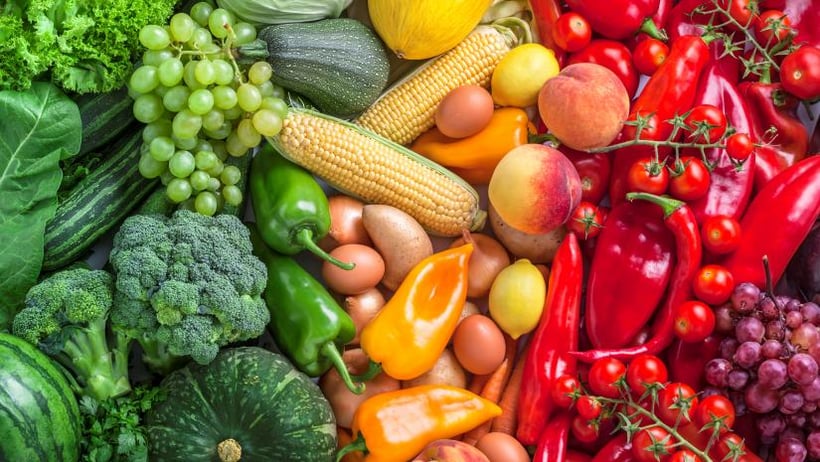
In the context of food safety, foods are classified as either high-risk or low-risk. High-risk foods provide the ideal conditions for bacterial growth, so they need to be handled very carefully to prevent food poisoning.
Low-risk foods do not provide the ideal conditions for bacteria to grow, so they are generally considered to be ‘safe’; however, any food can cause food poisoning or other health risks if it has become contaminated at any point in the food supply chain.
According to research by the Centers for Disease Control and Prevention (CDC), food-borne illness outbreaks linked to low-risk foods (usually fresh fruits and vegetables) account for up to 50% of all food-borne illness outbreaks.
High-risk vs low-risk foods
High-risk foods are generally moist, high in protein or starch and have a neutral pH (low to medium acidity). High-risk foods include:
- meat and poultry
- seafood
- eggs
- dairy
Under the right temperature conditions, bacteria on and in high-risk foods will reproduce at an alarming rate. High levels of bacteria in food can cause food poisoning.
Low-risk foods include:
- fruits and vegetables
- bread and baked goods
- candy, honey, jam and preserves
- vinegar
It’s important to remember that low-risk foods are only low-risk when they are handled safely. Bacteria can easily enter damaged fruits and vegetables, and some fruits harbour dangerous bacteria on the rind which can be spread to the inside.
Viruses — including Norovirus, the leading cause of food-borne illnesses and hospitalizations in Canada — can and do travel on low-risk foods and cause food poisoning.
According to the Government of Canada, the majority of outbreaks of food-borne Norovirus are spread by Food Handlers who have the virus, especially if they do not practice good personal hygiene while handling food.
Tips for handling low-risk foods safely
There are many food premises that serve, sell or distribute primarily (or only) low-risk foods. For example, convenience stores, bakeries and food charity organizations.
Regardless of the types of food you prepare or distribute, it’s important to do the following to ensure food safety:
- clean and sanitize food contact surfaces, equipment and utensils after use
- dispose of waste effectively (at least once a day)
- store food properly (e.g. store dry goods off the floor, store low-risk perishable foods like fresh fruits and vegetables in the refrigerator)
- prevent and eliminate pest infestations
- provide food safety training to anyone who handles food in your facility
Food Handler hygiene is of particular importance when it comes to preventing cross-contamination and food-borne illness. Remember, a Food Handler is anyone who handles food in your business or organization, not just cooks and chefs.
To ensure food safety, ensure that Food Handlers:
- wash hands frequently and properly
- wear clean clothing and footwear
- wear hair restraints
- do not handle ready-to-eat food with bare hands (provide single-use gloves if possible)
- do not eat, drink or use tobacco in any form while handling food
- do not handle food if they are sick (especially if they have symptoms of nausea, diarrhea, vomiting, sore throat, fever or other cold and flu symptoms)
Train food workers or volunteers to inform a supervisor if food has become contaminated or if they suspect it has become contaminated (and then discard that food).
Examples of situations where food should be discarded include:
- food has fallen onto the ground
- food was sneezed on or coughed on
- food was stored improperly and could have become contaminated
- there are signs of pest activity on food packaging or in areas where food is stored
By enforcing food safety rules, training your staff and monitoring food handling activities closely, you can minimize food safety risks and the consequences of food-borne illness.
To learn more about safe food handling, contact the Canadian Institute of Food Safety.




